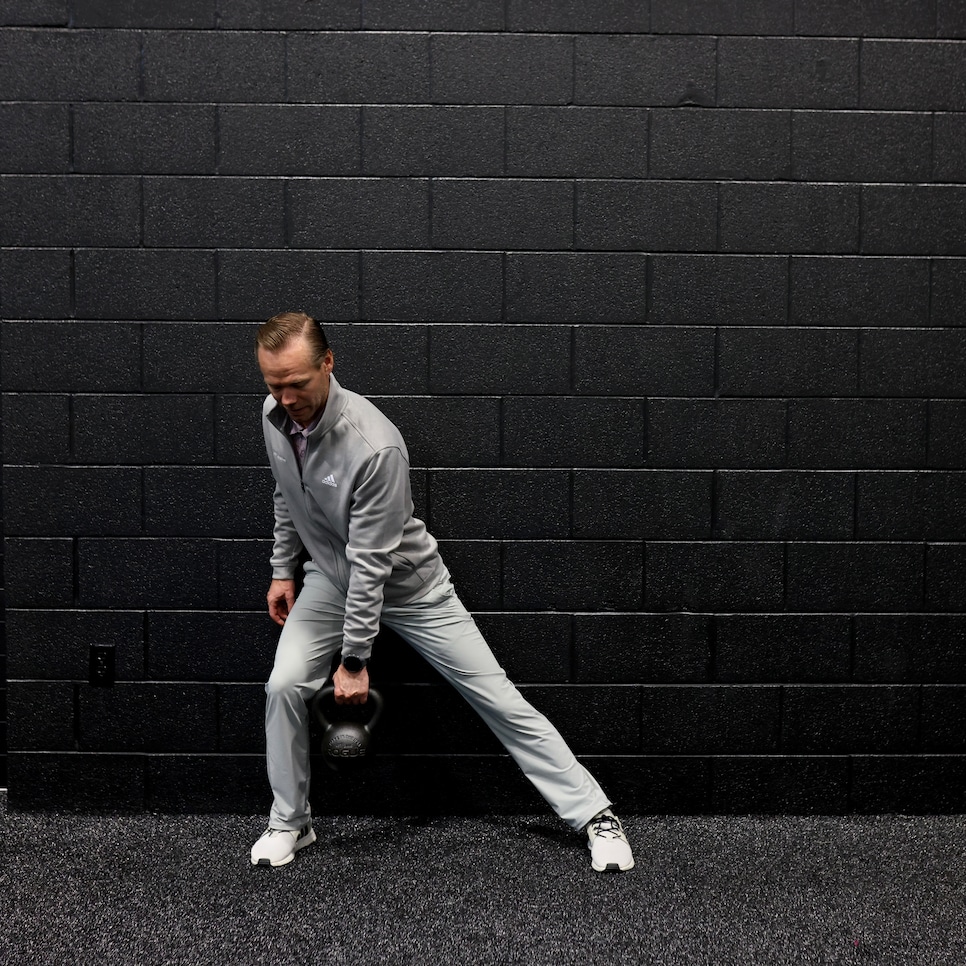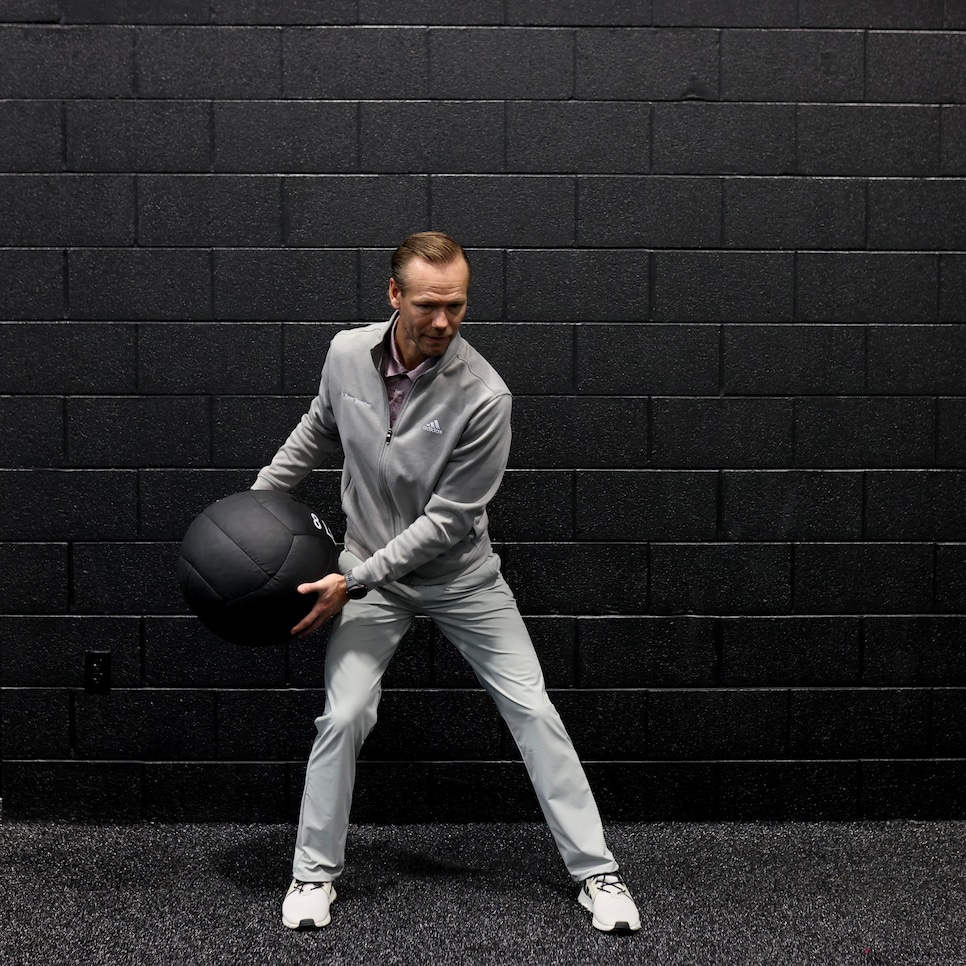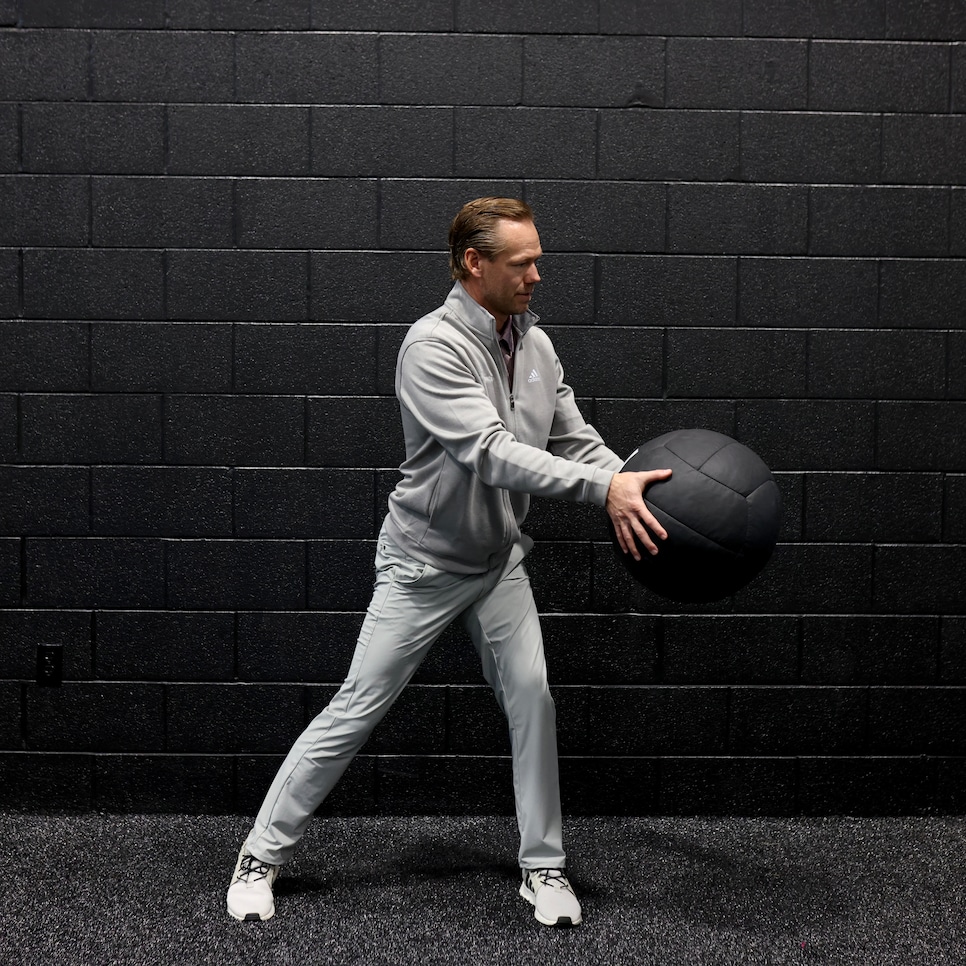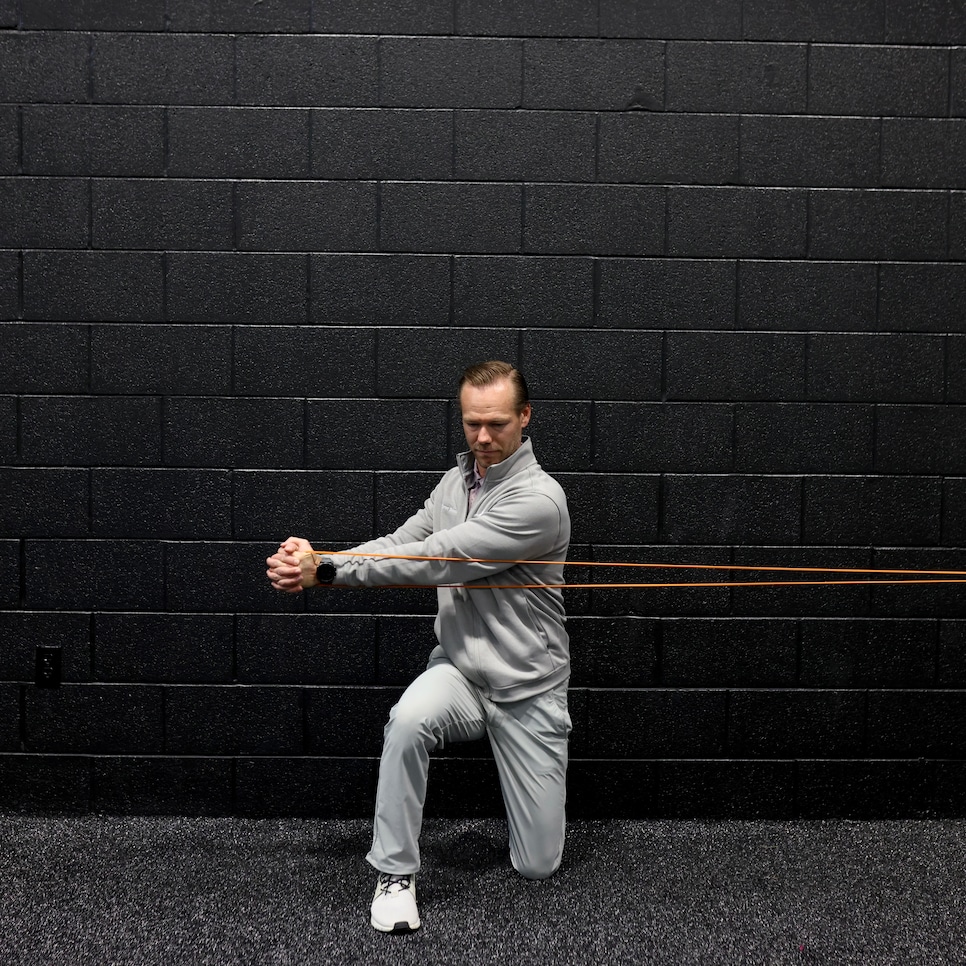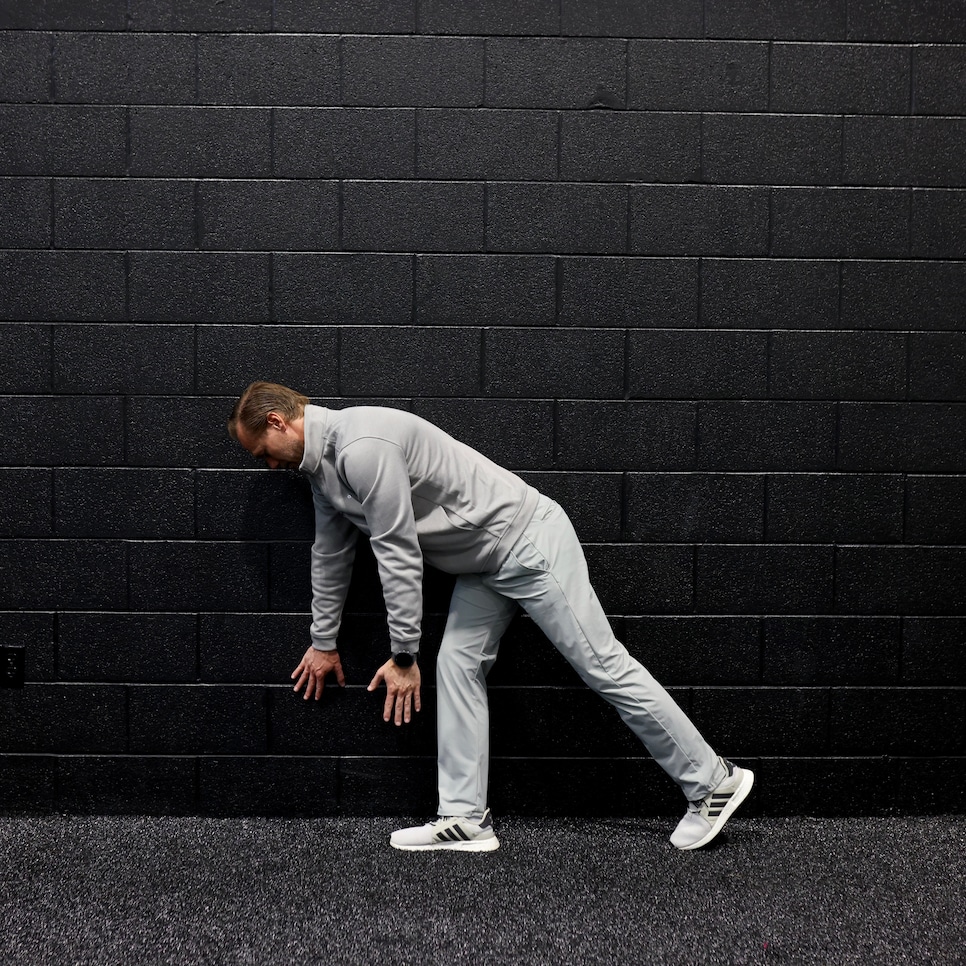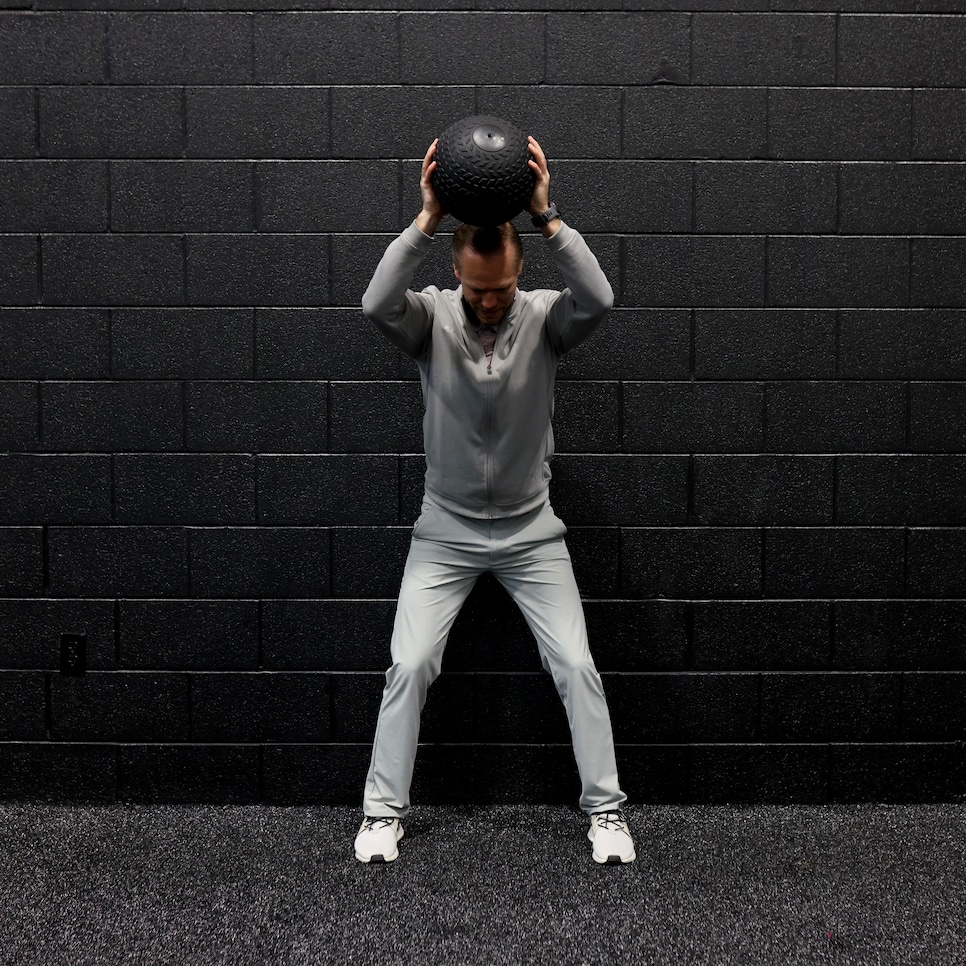What are the knees role in the golf swing? Where do we start? They stabilize the lower body allowing you to do everything from push into the ground for power, move laterally toward the target for compression and rotate to create whip-like speed through the hitting area for proper sequencing. Oh, and they also allow you to walk up and down hills, avoid slipping in bunkers and even stay steady so you can hole more putts.
In short, they’re a pretty big deal, and if you want to keep yours healthy and strong, you need to focus a portion of your gym time not thinking about them specifically. Instead, you should be more focused on how they are supposed to operate with other parts of the body during the golf swing, says Ryon Bosscher, a Golf Digest Certified Fitness Trainer. Bosscher trains golfers in Zeeland, Mich.
Good knee health requires a group effort, Bosscher says.
“For example, I was playing around swinging a 6-iron the other day and thinking about how important the hips and feet are in terms of keeping the knee joint healthy,” he says.
A widely held belief in fitness, first introduced by Gray Cook and Mike Boyle, is that the body has a series of joints that alternate in roles from mobility to stability. If joints that are supposed to have good range of motion—such as the ankles or hips—are limited, then the body recruits a stable joint with less range of motion—such as the knees—to perform the movement. When stable joints are pushed to their limits in terms of mobility, that’s when pain and injuries usually show up.
“The knee is often a victim of poor function in the major joints above or below,” Bosscher says. “Proper stability of the ankle and hip region are required for optimal performance and protection of the knee. Taking this into consideration, it should be a no-brainer that full-body exercises are much more practical and appropriate for the golfer than isolated exercise machines. The golf swing requires a great amount of proprioception (body awareness) and stability to move efficiently, and it would be wise to train the whole body rather than isolated joints.”
For example, isolated knee-extension machines primarily target quadricep activity, he says. While this exercise is not inherently bad, it would be much more advantageous for a golfer to target muscles and joints above and below the knee to better complement the golf swing.
Also, Bosscher says, every golfer tends to favor one of these major swing characteristics—lateral, rotational, vertical. To train more effectively, it’s not a bad idea to focus on exercises that are tailored to the swing pattern the golfer naturally favors.
Lateral = side-to-side
Rotational = twisting
Vertical = up and down
Here are his recommendations for great “knee” exercises in each plane of motion.
LATERAL EXERCISES (Controlling side-to-side movement is key to maintaining balance, generating power and staying stable throughout the golf swing.)
Lateral lunges: Strengthens the muscles around the knee/hip and improves side-to-side stability, helping golfers control knee alignment during swings and reduce injury risk. It also mimics the weight shift in a golf swing, enhancing performance and joint protection.
Medicine-ball toss (wall): While there is some rotary movement, this lateral exercise is great at training the weight shift from the trail leg to the lead leg. This helps build explosive strength (through the hips) and protects the knees from unwanted torque or collapse during the swing.
ROTATIONAL (Rotational training builds power through the hips and core, taking pressure off the knees and preventing harmful twisting.)
Banded chops: The resistance of the band through this movement requires great core and hip activation to remain stable. Get creative with it! Use resistance to mimic the backswing or the downswing. You can do this standing or kneeling and can have the band attached at various heights (high-to-low, low-to-high, etc.).
Hip airplanes: As the name describes, this is a hip-dominant movement. It’s a very good exercise targeting both hip mobility and stability, which is necessary to offload excessive stress to the knees. I like to do it up against a wall to prevent excessive hip shifting (cheating). You can also make it easier by performing this kneeling on one knee.
VERTICAL (Ground-reaction vertical force creates an upward energy that transfers through the legs, hips and into the club. When vertical force is used efficiently, it reduces the need to over-rely on twisting or lateral movements, which can strain the knee joint.)
Ball slams (ground): An exercise very similar to a squat, but it adds a slam or med-ball throw into the ground for greater core activation. Start at an appropriate height and throw hard into the ground.
Kettlebell swings: This is a simple hip hinge while maintaining an erect spine. The hips are the primary driver here and the kettlebell is along for the ride. Drive your hips backward first, as the torso drops. Then stand tall as the hips thrust forward.

